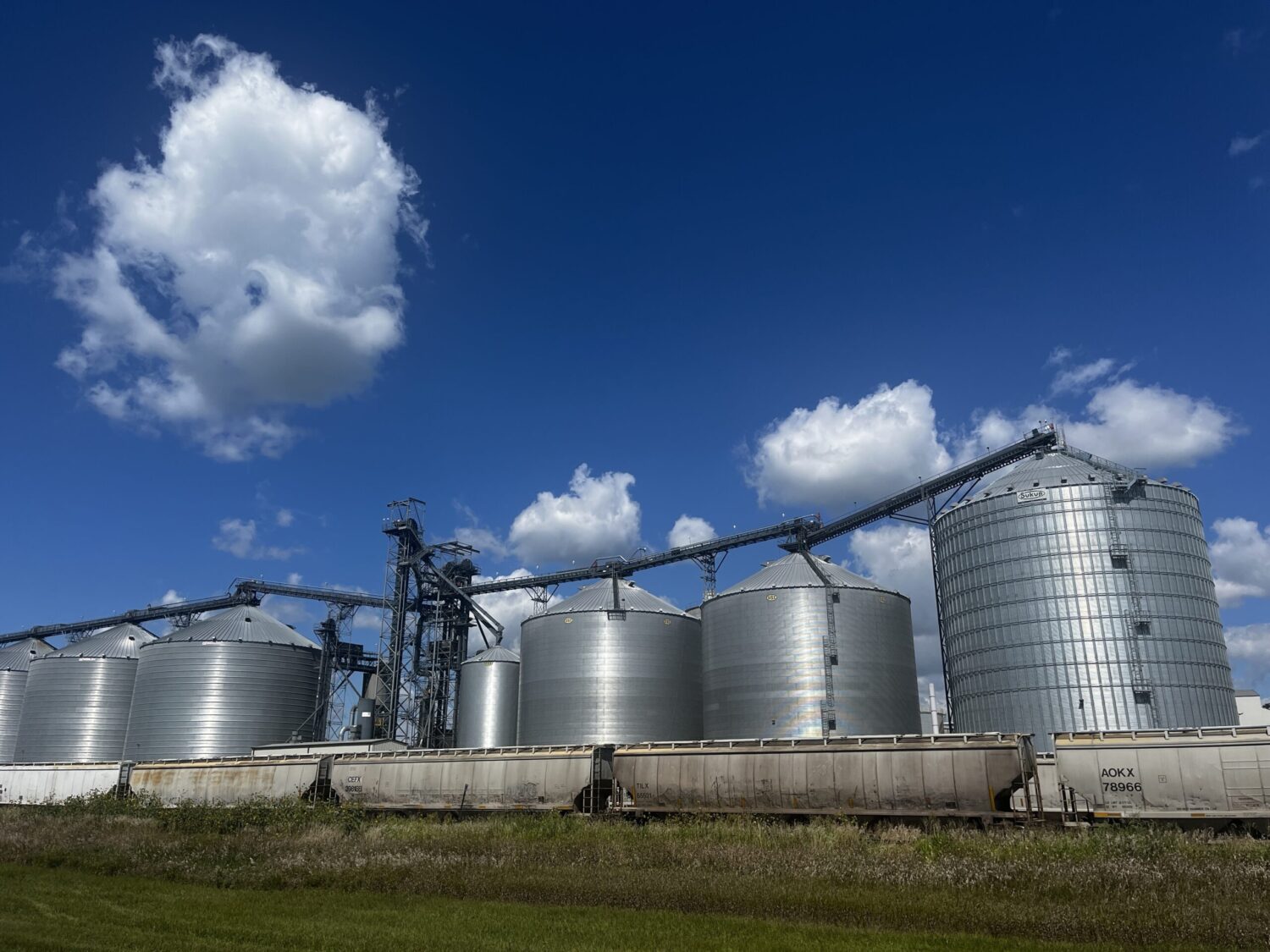
Joshua Haiar/South Dakota Searchlight
A company proposing an $8 billion carbon dioxide pipeline through eastern South Dakota says the project would be good for the environment.
The claim is based on the heat-trapping carbon dioxide emitted by ethanol plants that would be captured, transported by the pipeline and stored underground in North Dakota.
“This carbon capture and storage project will have the capacity to prevent the release of 18 million metric tons of CO2 to the atmosphere every year,” says the project website, “or the equivalent of removing the annual CO2 emissions of 4 million vehicles from our roads.”
While that’s true, participating ethanol plants could still emit about 7 million metric tons of additional carbon dioxide annually. That’s because the pipeline would only capture some — not all — of the CO2 emitted by the plants.
When ethanol plants turn corn into a gasoline additive, they produce two kinds of CO2 emissions: the kind emitted by fossil fuels used to power industrial equipment, such as boilers and grain dryers, and the kind emitted by corn during fermentation.
Summit Carbon Solutions’ pipeline would capture carbon dioxide from corn fermentation. The CO2 emitted by gas-powered machines would be released to the atmosphere.
“So, there are still existing emissions associated with corn ethanol that aren’t being neutralized here,” said Daniel Sanchez, an assistant professor at the University of California-Berkeley’s Department of Environmental Science, Policy and Management.
Sanchez said capturing CO2 emissions from industrial equipment, like boilers and grain dryers, is more expensive than capturing fermentation emissions. Industrial machinery uses a lot of natural gas, which releases more than CO2 when burned as fuel. He said it requires extra processes to separate that CO2 from water vapor and other gases.
Iowa-based Summit has partnered with ethanol producers including Poet and Valero to capture fermentation-produced CO2 at 57 ethanol plants in South Dakota and several other states and store it underground in North Dakota. The project, which has not yet gained a permit from South Dakota regulators, would capitalize on federal tax credits that are intended to incentivize the prevention of greenhouse gas emissions.
Amount of fermentation emissions unknown
The U.S. Environmental Protection Agency only reports the amount of carbon dioxide that ethanol plants emit from gas-powered processes. Seven million metric tons was the approximate sum of those emissions from the 57 Summit-partnered ethanol plants in 2022.
The EPA does not report the amount of corn-fermentation carbon dioxide emitted. That’s because fermentation emissions are considered cyclical. Corn pulls carbon dioxide out of the air as it grows in a cornfield. Then it releases carbon dioxide back to the atmosphere as it ferments in an ethanol plant. Finally, farmers plant more corn, and the cycle continues.
Summit declined to release amounts of CO2 emitted from corn fermentation at its 57 partner ethanol plants. Ben Nelson, Summit’s director of carbon programs, said a typical 100-million-gallon plant produces about 286,000 metric tons of fermentation CO2.
Sanchez, of California-Berkeley, said “modern and efficient” ethanol plants emit about 90,000 metric tons of fermentation CO2.
The diverging estimates mean the Summit pipeline and its 57 partner plants could capture anywhere from 5 million to 16 million metric tons of fermentation CO2 annually — both of which are within the pipeline’s proposed capacity of 18 million metric tons.
For comparison, approximately 1,300 power plants across the U.S. emitted about 1.5 billion metric tons of CO2 in 2022.
“This is both a giant pipeline project and a drop in the bucket,” Sanchez said.
Aiming for net-negative
Sanchez added that if an ethanol plant replaces its natural gas use with something sustainable, while also capturing and storing its fermentation CO2 emissions, it can pull more greenhouse gases out of the atmosphere than are released in the production lifecycle of ethanol associated with the plant.
Nelson pointed to a 2022 report for the Renewable Fuels Association that said ethanol production could reach net-negative emissions by 2040. The report indicates carbon sequestration at ethanol plants would make the biggest difference – a bigger difference than industry-wide implementation of farming practices that sequester more carbon in the soil, such as less disruptive tillage practices and planting cover crops.
Nelson said the average ethanol plant emits about 55 grams of CO2 per megajoule (a unit of energy) of ethanol produced, and Summit’s project would lower that to about 25 grams of CO2.
“Achieving net-negative emissions will also require other efforts such as climate-smart farming, using renewable natural gas, renewable electricity at ethanol plants, and improving plant efficiency,” Nelson said.
In South Dakota, some ethanol plants are already receiving what’s been coined “renewable natural gas” derived from landfill emissions, and a Brookings area utility company is sending the methane emitted from dairy livestock manure to be mixed into regional natural gas supplies.
